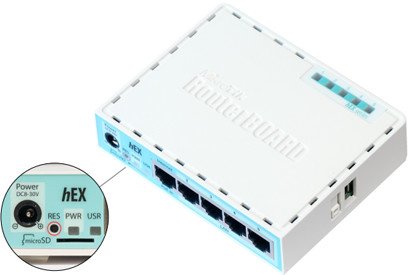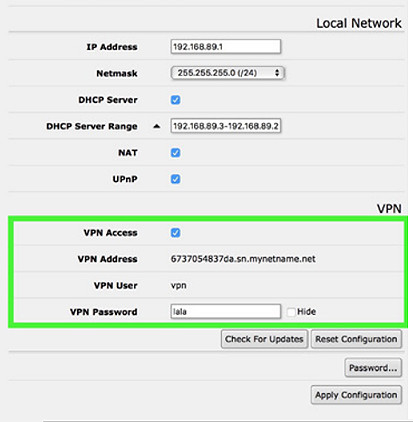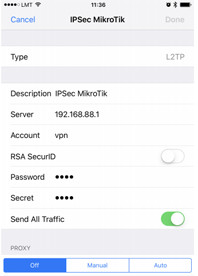
MikroTik Newsletter - Issue 73
MikroTik Newsletter
Issue #73 - Download PDFMeet the new hEX - Dude server ready!
hEX (revision 3) is a five port gigabit Ethernet router for locations where wireless connectivity is not required. The device has a USB 2.0 port. This new updated revision of the hEX brings several improvements in performance.
- 880 MHz CPU, 2 cores with 4 threads total
- 256 MB RAM
- Full size USB
- microSD slot for “Dude server” support
- Same form factor, same price

hEX performance test setup

Basic IPsec in tunnel mode is using traffic generator with 1400 byte packets. Two CCR1036 routers are used to generate traffic. IPsec tunnel runs between two HEX (rev3) devices.
To get the best performance two simple rules must be taken into account:
• avoid packet fragmentation;
• there must be no packet reordering.
As you can see in the image above Hex (rev3) reaches maximum IPsec bandwidth only with 50% total CPU load.
To read more about hEX (rev3) configuration optimization, visit our Wiki page.
The Dude server on hEX RB750Gr3
New hEX (RB750Gr3) unit is ideal for small to medium size The Dude server installations. For server database storage on this device you have two options: microSD cards (up to 128 GB) or USB flashes.
Note that preferably you should use industrial grade microSD cards and USB flashes as they have longer life cycle under applications that can write data to flash more frequently as The Dude server database in this case. To find out more information and instructions, please visit our Wiki page!
Simple IPsec configuration in QuickSet
Since Apple removed support for the less secure PPTP VPN in all it’s software updates, you might be wondering how to configure the superior IPsec for your home or office device. Well, we have some great news!
As a lesser known feature, IPsec server can be enabled with just one click in the QuickSet interface. If you have used only QuickSet to set up your device, and it has a public IP address, all you need to do is click the “VPN access” checkbox and enter a password in the password field. IPsec server is now running, and your Apple device just needs a new VPN connection with type “L2TP” and password and secret to be the same as you entered in your QuickSet password field. The connection address can be the IP address of the router, or the mynetname DNS name that the QuickSet will show (handy if your IP changes often).
 |  |
For a more detailed document with manual configuration instructions for both Apple and Windows, we have a special new documentation section with full examples of client and server configuration: Visit MIkroTik Wiki
Hardware improvements
We have made many improvements for our other popular products as well:
cAP (product code RBcAP2nD) and mAP (product code RBmAP2nD) now have 650MHz CPU, Dual-Chain wireless with output power up to 158mW and 802.3at/af support. Previous versions (product codes RBcAP2n and RBmAP2n) had 400MHz CPU, Single-Chain wireless with 50mW output power and passive PoE only.
OmniTIK 5 and OmniTIK 5 PoE now have 600Mhz CPU, increased RAM (64MB for OmniTIK 5 and 128MB for OmniTIk 5 POE), as well as new wireless chip with increased output power (up to 1000mW). Previous versions had 400MHz CPU, 32MB RAM and 400mW output power.
The QRT 2 and SXT 2 is now shipping with 600MHz CPU instead of 400MHz. DynaDish 5, SXT HG5 ac, SXT 5 ac, SXT SA5 ac and SXT Lite5 ac are now shipping with QCA9892 wireless chip(support for 5/10Mhz channels in 802.11a/n).
New hEX PoE with Gigabit ports and PoE-out
hEX PoE is a five port gigabit Ethernet router for locations where wireless connectivity is not required. The device has a USB 2.0 port and an SFP port for adding optical fiber connectivity. The ports 2-5 can power other PoE capable devices with the same voltage as applied to the unit.
It is affordable, small and easy to use, but at the same time comes with a very powerful 800MHz CPU, capable of all the advanced configurations that RouterOS supports. Less power adapters and cables to worry about! Max current is 1A per port, Ethernet ports are shielded.




